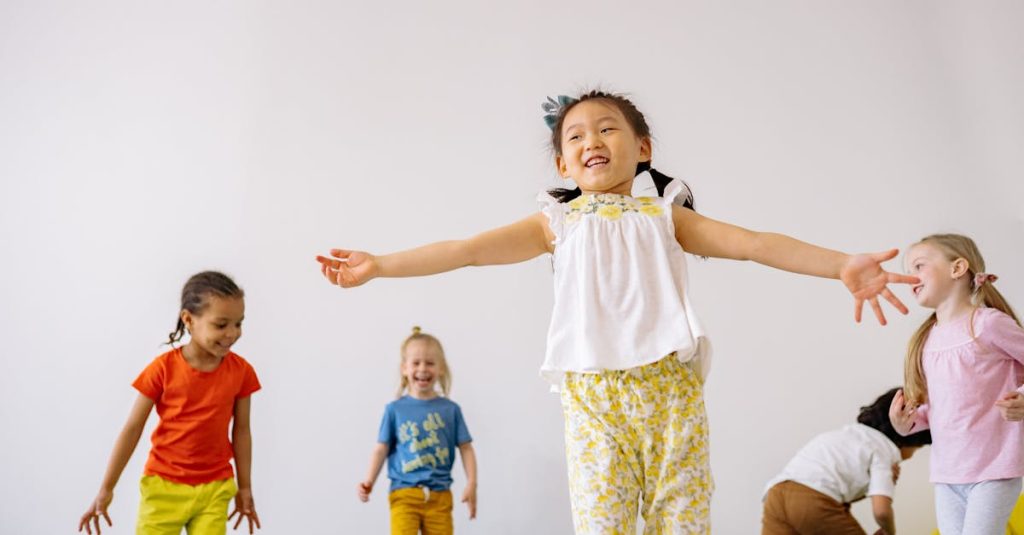Yelling at kids is a common yet controversial parenting practice. While it may feel like an effective way to get children’s attention or correct their behavior in the moment, research suggests that yelling can have negative long-term effects on a child’s emotional well-being and the parent-child relationship.
Many parents resort to yelling when they’re feeling overwhelmed, frustrated, or at their wits’ end. However, it’s important to understand the impact of this behavior and explore alternative strategies for disciplining and communicating with children.
In this article, we’ll delve into the reasons why parents yell, the potential consequences of yelling at kids, and provide practical tips and techniques for breaking the yelling cycle and fostering a more positive, respectful family dynamic.
The Prevalence of Yelling at Kids
Yelling at children is a common and prevalent form of childhood verbal abuse. Despite its harmful effects, it remains a widespread parenting behavior.
Yelling as a Common Parenting Behavior
A study published in Child Abuse & Neglect found that shouting, yelling, or screaming at children is one of the most frequent forms of adverse childhood experiences (ACEs). In one cohort, 57.7% of children reported experiencing a household member shouting, yelling, or screaming at them[4]. Data from the World Health Organization indicates that emotional abuse, which includes verbal abuse, is now the most prevalent form of child maltreatment, surpassing physical and sexual abuse[1][2].
Many parents, even those aware of its ineffectiveness, continue to yell at their children due to stress, frustration, or a lack of alternative discipline methods. This highlights the need for increased awareness about the detrimental effects of yelling and the importance of learning effective parenting strategies.
Situations That Trigger Parents to Yell
Various situations can trigger parents to yell at their children:
- When children don’t listen or follow instructions
- During times of stress, such as rushing to get out the door or managing multiple tasks
- When parents feel overwhelmed or frustrated with their child’s behavior
- When parents are tired or sleep-deprived
- When parents have unresolved issues from their own childhood experiences
Recognizing these triggers can help parents develop coping mechanisms and alternative strategies to handle challenging situations without resorting to yelling. By understanding the underlying causes of their reactions, parents can work towards breaking the cycle of verbal abuse and creating a more positive family environment.
The Negative Impact of Yelling on Children

Yelling at children can have far-reaching consequences that extend beyond the immediate situation. It’s crucial for parents to understand the potential harm caused by this behavior.
Emotional and Psychological Effects
Yelling at children has significant and detrimental emotional and psychological effects, both in the short and long term.
Short-Term Effects:
- Children may exhibit aggressive behavior, anxiety, and withdrawal immediately after being yelled at[2][4][5].
- Yelling triggers a stress response, elevating stress hormones and inhibiting emotional and logical functions[4].
- They may become more aggressive, display anxiety symptoms, and experience behavioral problems like losing self-control or reacting with anger or frustration[4].
Long-Term Effects:
- Yelling can lead to anxiety, low self-esteem, depression, and a negative self-view[1][3][5].
- Children may experience social and behavioral issues, including bullying behavior and aggression[1][3][5].
Damage to Parent-Child Relationship
Yelling erodes the trust and security in the parent-child relationship, leading to long-lasting consequences:
- Children may feel emotionally disconnected from their parents, perceiving them as unapproachable or untrustworthy[6].
- They may develop an avoidant or insecure attachment style, affecting future relationships[7].
- Yelling can create a cycle of negative interactions, with children withdrawing or retaliating, further straining the relationship[8].
- Children learn that yelling is a normal response to frustration or anger, rather than healthy coping mechanisms[9].
- They may struggle to develop effective emotional regulation skills, leading to difficulties in managing their own emotions and conflicts[10].
- This learned behavior can extend into their adult lives, affecting personal and professional relationships[11].
Why Yelling is Ineffective Discipline
Yelling at children is widely recognized as an ineffective and potentially harmful form of discipline. Let’s explore the reasons why yelling fails to achieve the desired results and can lead to negative outcomes.
Children Tune Out Frequent Yelling
When parents resort to yelling as a primary means of communication, children may begin to tune out the message. Frequent exposure to loud, angry voices can cause children to become desensitized, leading them to ignore or dismiss the content of the yelling. As a result, the intended message is lost, and the child fails to learn or modify their behavior.
Additionally, children who are consistently yelled at may develop a fear response, causing them to withdraw or shut down emotionally. This emotional disconnect can hinder effective communication and make it even more challenging for parents to convey important lessons or guidance.
Yelling Fails to Teach Appropriate Behavior
Yelling does not provide children with the necessary tools or information to understand and correct their misbehavior. When parents yell, they often focus on expressing their frustration or disapproval rather than offering constructive feedback or guidance. This approach fails to teach children alternative, appropriate behaviors or problem-solving skills.
Instead of yelling, parents should aim to:
- Clearly communicate expectations
- Explain the consequences of misbehavior
- Model appropriate behavior themselves
- Offer positive reinforcement for good behavior
By using calm, firm, and consistent communication, parents can create an environment that promotes learning and encourages children to develop healthy coping mechanisms and decision-making skills.
Healthier Alternatives to Yelling

Yelling at children can have severe and lasting negative effects on their psychological and emotional well-being. Fortunately, there are several effective alternatives that promote a more positive and nurturing family dynamic.
Staying Calm in Challenging Moments
One of the most crucial steps in avoiding yelling is learning to manage one’s own emotions during stressful situations. When feeling overwhelmed, it’s helpful to take a few deep breaths or step away from the conflict for a brief moment. This pause allows parents to regain composure and approach the situation with a clearer mind[1]. Recognizing personal triggers, such as fatigue or stress, can also help parents develop coping strategies to maintain their calm demeanor when faced with challenging behaviors[2].
Using Positive Discipline Strategies
Positive discipline focuses on teaching children appropriate behaviors and problem-solving skills rather than relying on punishment or yelling. This approach involves setting clear expectations, providing age-appropriate consequences, and offering guidance and support[3]. For example, instead of yelling at a child for not cleaning their room, a parent could calmly explain the importance of tidiness and work with the child to develop a plan for keeping the space organized. Positive reinforcement, such as praise or rewards for good behavior, can also encourage children to make better choices in the future[4].
Focusing on Connection Over Correction
Prioritizing the parent-child relationship is essential for promoting positive behavior and reducing the likelihood of yelling. When children feel emotionally connected to their parents, they are more likely to listen and cooperate[5]. Parents can foster this connection by actively listening to their children, validating their feelings, and engaging in quality time together. When correction is necessary, it’s important to do so in a calm, firm manner that maintains the child’s sense of security and trust in the parent[6]. By focusing on connection, parents can create a supportive environment that encourages open communication and mutual respect.
Breaking the Cycle of Yelling

Yelling at kids can have profound and lasting negative effects on their psychological and emotional well-being. Breaking this cycle is crucial for fostering a healthier family dynamic and promoting positive child development.
Identifying Your Yelling Triggers
Recognizing the situations that trigger yelling is the first step in breaking the cycle. Common triggers include:
- Stress and fatigue: Overwhelm from work, household responsibilities, or personal issues[1]
- Children’s noncompliance or misbehavior: Frustration when kids don’t listen or follow rules[3]
- Unresolved childhood issues: Parents’ own experiences with yelling or emotional neglect[4]
By identifying these triggers, parents can develop coping strategies to manage their emotions and respond more effectively.
Practicing Patience and Self-Regulation
Developing patience and the ability to self-regulate emotions is essential for breaking the yelling cycle. Strategies include:
- Taking deep breaths or counting to ten before responding to challenging situations[1]
- Stepping away briefly to regain composure and perspective[4]
- Practicing mindfulness and stress-reduction techniques like meditation or yoga[5]
By modeling emotional regulation, parents teach children healthy ways to manage their own feelings and reactions.
Repairing When You Slip Up
Even with the best intentions, parents may sometimes slip up and yell. When this happens, it’s important to:
- Acknowledge the mistake and apologize sincerely to the child[1][4]
- Explain that yelling was not an appropriate response and express a commitment to doing better[3]
- Engage in a constructive discussion about feelings, expectations, and alternative solutions[5]
By taking responsibility and working to repair the relationship, parents demonstrate the value of accountability and open communication.
Conclusion
Breaking the cycle of yelling is essential for fostering healthier family dynamics and promoting positive child development. By recognizing triggers, practicing self-regulation techniques, and employing positive discipline strategies, parents can create a supportive environment that encourages open communication and mutual respect.
Prioritizing the parent-child relationship through active listening, emotional validation, and quality time can reduce the likelihood of yelling and strengthen family bonds. When mistakes happen, parents should take responsibility, apologize, and engage in constructive discussions to model healthy emotional management for their children.
With patience, self-awareness, and a commitment to positive parenting practices, families can break free from the cycle of yelling and create a nurturing home environment that allows children to thrive emotionally, socially, and psychologically.



